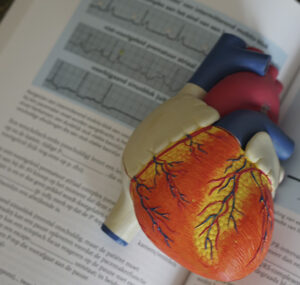Stroke continues to be a leading cause of acquired disability, especially among older people, and can have a major effect on independent living. Stroke is one of the leading causes of death and disability in India. The estimated adjusted prevalence rate of stroke range, 84-262/100,000 in rural and 334-424/100,000 in urban areas. The incidence rate is 119-145/100,000 based on the recent population based studies. There is also a wide variation in case fatality rates with the highest being 42% in Kolkata.
Nurses not only have a care management role, but also take responsibility for promoting recovery and preventing complications, for example through pressure area care, positioning for therapeutic benefit, breathing and leg exercises, and promoting and managing continence. Their role is central to stroke rehabilitation and nursing intervention is significant in terms of improving outcomes for stroke survivors and their carers, and reducing the costs associated with inpatient stay. This role is diffuse and complex and has been described as comprising three main domains of care – provider, facilitator and manager.
PLANNING AND DELIVERING STROKE REHABILITATION
I. Screening and assessment
On admission to hospital, to ensure the immediate safety and comfort of the person with stroke, screen them for the following and, if problems are identified, start management as soon as possible:
- Orientation
- Positioning, moving and handling
- Swallowing
- Transfers (for example, from bed to chair)
- Pressure area risk
- Continence
- Communication, including the ability to understand and follow instructions and to
- Convey needs and wishes
- Nutritional status and hydration
II. Setting Goals For Rehabilitation
- Ensure that people with stroke have goals for their rehabilitation that:
- Are meaningful and relevant to them
- Focus on activity and participation
- Are challenging but achievable
- Include both short-term and long-term elements.
- Ensure that goal-setting meetings during stroke rehabilitation: are timetabled into the working week involve the person with stroke and, where appropriate, their family or carer in the discussion.
- Ensure that during goal-setting meetings, people with stroke are provided with an explanation of the goal-setting process the information they need in a format that is accessible to them the support they need to make decisions and take an active part in setting goals.
- Give people copies of their agreed goals for stroke rehabilitation after each goal-setting meeting.
- Review people’s goals at regular intervals during their stroke rehabilitation.
III. Intensity of stroke rehabilitation
Offer initially at least 45 minutes of each relevant stroke rehabilitation therapy for a minimum of 5 days per week to people who have the ability to participate, and where functional goals can be achieved. If more rehabilitation is needed at a later stage, tailor the intensity to the person’s needs at that time.
IV. Cognitive functioning
Screen people after stroke for cognitive deficits. Where a cognitive deficit is identified, carry out a detailed assessment using valid, reliable and responsive tools before designing a treatment programme.
V. Emotional functioning
Assess emotional functioning in the context of cognitive difficulties in people after stroke. Any intervention chosen should take into consideration the type or complexity of the person’s neuropsychological presentation and relevant personal history.

VI. Swallowing
Offer swallowing therapy at least 3 times a week to people with dysphagia after stroke who are able to participate, for as long as they continue to make functional gains. Swallowing therapy could include compensatory strategies, exercises and postural advice.
- Return to work
Return-to-work issues should be identified as soon as possible after the person’s stroke, reviewed regularly and managed actively. Active management should include: identifying the physical, cognitive, communication and psychological demands of the job identifying any impairments on work performance tailoring an intervention educating about the Equality Act 2010 and support available workplace visits and liaison with employers to establish reasonable accommodations, such as provision of equipment and graded return to work.
- Long-term health and social support
Review the health and social care needs of people after stroke and the needs of their carers at 6 months and annually thereafter. These reviews should cover participation and community roles to ensure that people’s goals are addressed.
PSYCHOLOGICAL CARE
Psychological problems following stroke may include depression, anxiety, emotionalism and post-traumatic stress disorder. About one third of survivors will experience depression at some point, but it often remains undiagnosed or inadequately treated.
In terms of assessment, the single question: “Do you often feel sad or depressed?” is accurate in identifying possible depression following a stroke, while the Signs of Depression Scale may be useful in those with cognitive and communication problems. NHS (NATIONAL HEALTH SERVICE) Improvement advocates a stepped care model, in which nurses have an important role involving assessment, watchful waiting, support, psycho-education, active monitoring and referral.

Level 1: “Sub-threshold problems” at a level common to many or most people with stroke
General difficulties in coping and perceived consequences for the person’s lifestyle and identity. Mild and transitory symptoms of mood and/or cognitive disorders such as a fatalistic attitude to the outcome of stroke, which have little impact on engagement in rehabilitation.Support could be provided by peers and stroke specialist staff.
Level 2: Mild/moderate symptoms of impaired mood and/or cognition that interfere with rehabilitation. These may be addressed by non-psychology stroke specialist staff, supervised by clinical psychologists (with special expertise in stroke) or neuropsychologists.
Level 3: Severe and persistent disorders of mood and/or cognition that are diagnosable and require specialized intervention, pharmacological treatment and suicide risk assessment and have proved resistant to treatment at levels 1 and 2.These would require the intervention of clinical psychology (with specialist expertise in stroke) or neuro psychology and/or psychiatry.
Nurses can provide generic support through active listening, education and sign posting to potential support services. Listening to patients’ accounts of their journeys acknowledges them as individuals and can give an appreciation of the challenges they face. Emotional challenges of stroke may include fear, anxiety, frustration, loss of confidence, a sense of loss, and uncertainty and disappointment around recovery. Stroke survivors have reported information, problem-solving strategies and engagement in activities as extremely helpful in their recovery and assisting with acceptance. There are some simple strategies that nurses can use to identify difficulties and provide support. Asking open-ended questions facilitates dialogue and enables patients to talk more freely about their worries and concerns, while providing clear explanations and reassurance may help manage confusion and uncertainty. Supporting patients to think about their own solutions to identified problems, and highlighting strengths and success may help promote more positive mood states after stroke.
SECONDARY PREVENTION
Nurses also have an important role in assessing other risk factors for recurrent stroke, such as smoking, inactivity, dietary factors, obesity and excess alcohol intake. Intervention plans may be initiated in the inpatient setting and continued in outpatients or primary care. Scheduled post-stroke reviews at six weeks and six months provide an ideal opportunity to do this, and may be supplemented by opportunistic advice. Survivors may be reluctant to admit that they are not taking medications as prescribed, so it is important to ask directly and to “give permission” for them to acknowledge problems, by using a non-judgmental approach.
REFERENCES:
- http://www.ncbi.nlm.nih.gov/pmc/articles/PMC3859004/
- http://www.nursingtimes.net/Journals/2012/11/22/n/j/o/121120strokerehab.pdf
- http://www.americannursetoday.com/postdischarge-nursing-care-of-stroke-patients/
- http://www.americannursetoday.com/postdischarge-nursing-care-of-stroke-patients/
- http://www.nice.org.uk/guidance/cg162






